The Sockeye Salmon, also known as the Kokanee Salmon, is a species in the Salmonidae family. Researchers place it in the taxonomic genus Oncorhynchus, along with the cutthroat trout, pink salmon, dog salmon, coho salmon, rainbow trout, king salmon, and more. Read on to learn about the Sockeye Salmon.
Description of the Sockeye Salmon
Like many salmon species, this fish changes drastically when it comes time to spawn. Adults in the ocean have iridescent blue scales. As they return to freshwater to spawn, their scales turn red and their heads turn green.
As adults, these fish typically measure about 2 feet long and weigh between 5 and 10 pounds.
Interesting Facts About the Sockeye Salmon
These fish have a number of unique traits and adaptations. Learn more about this species, below.
- Anadromous – These fish begin life in freshwater habitats, swim to the ocean, and return to freshwater when it comes time to spawn. You can find this lifecycle, also known as an anadromous life cycle, in most salmon species.
- Landlocked – However, some populations of this species live out their entire lives in freshwater habitats. People refer to species in landlocked areas with no access to the ocean as “kokanee salmon.” These populations do not reach the same sizes as those that migrate to the ocean.
- Semelparous – Regardless of where they live, these salmon have semelparous lifecycles. This means that the fish spawn once and die shortly after. The nutrients from their bodies enrich the waters and help their fry survive.
- Redds – Another way that the adults help their young survive are the construction of redds. The females dig these redds, or nests, in the gravel of a stream or creek. After she lays her eggs, she buries them in the redd to hide them from predators.
Habitat of the Sockeye Salmon
Young salmon hatch in freshwater habitats. They spend the first part of their lives growing in lakes, ponds, streams, creeks, and rivers. Eventually, they migrate to brackish estuary habitats, and then into the ocean. Adults spend their lives in coastal seas before returning to freshwater habitats to spawn.
Distribution of the Sockeye Salmon
These fish live along the western coast of North America. Their range extends from the coast of California north to Alaska, and then across the Bering Strait to eastern Russia and northern Japan.
While spawning, these fish range inland up freshwater streams, rivers, and creeks. Some populations also live in landlocked bodies of freshwater with no access to the ocean.
Diet of the Sockeye Salmon
This species of salmon has carnivorous feeding habits. However, unlike other salmon species which feed on fish, their primary prey consists of invertebrates.
Plankton, such as krill, make up the majority of their oceanic diet. They hunt for plankton at different depths during different times of day. Juveniles in freshwater habitats hunt for insects, insect larvae, and mollusks like snails.
Sockeye Salmon and Human Interaction
Human activity impacts this species quite drastically, as people catch and eat this salmon prolifically. Other human impacts, like pollution and habitat destruction, also cause problems for this fish.
In some areas and for some populations, these activities have drastically reduced their numbers. However, the IUCN lists the population as a whole as Least Concern.
Domestication
Humans have not domesticated this fish species in any way.
Does the Sockeye Salmon Make a Good Pet
No, you would not want to keep this fish as a pet. They grow quite large, which means that it would be difficult to keep them in a home aquarium.
Sockeye Salmon Care
Very few facilities keep this species, including fish farms. Those facilities that do keep the fish typically house them in a saltwater habitat. They house the salmon in massive oceanic tanks with a variety of other species that they naturally cohabitate with in the wild, such as garibaldi. Aquariums feed the fish a variety of plankton and other small invertebrates.
Behavior of the Sockeye Salmon
Throughout their lifecycle, this fish species lives in groups known as schools. The largest salmon have the highest spot on the dominance hierarchy.
The young fish hatch in freshwater habitat, where they continue to grow and hide from predators, moving downstream towards the ocean. Adults spend their lives in the ocean, and return to fresh water when it comes time to spawn.
Reproduction of the Sockeye Salmon
When the spawning fish swim upstream, the females choose suitable locations to dig their nests in the gravel. A female digs several nests, called “redds,” laying eggs in each.
As the female lays her eggs, the male fertilizes them, and the female then buries the eggs in gravel. Shortly after spawning, the adults die, and their carcasses enrich the water with nutrients.
Females can produce up to 200 eggs. It takes about a month for the eggs to hatch, and the young fish are fully independent at birth.



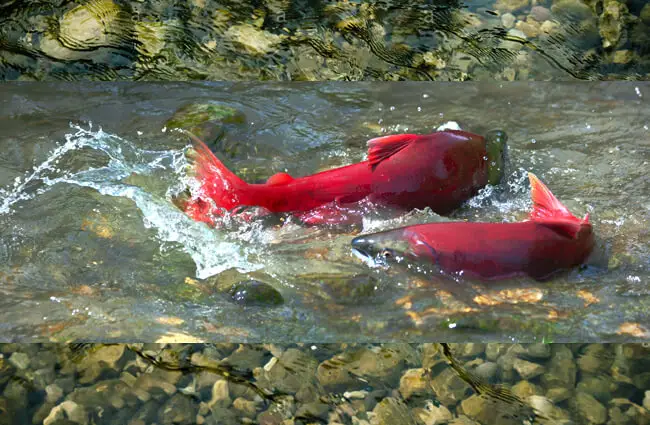
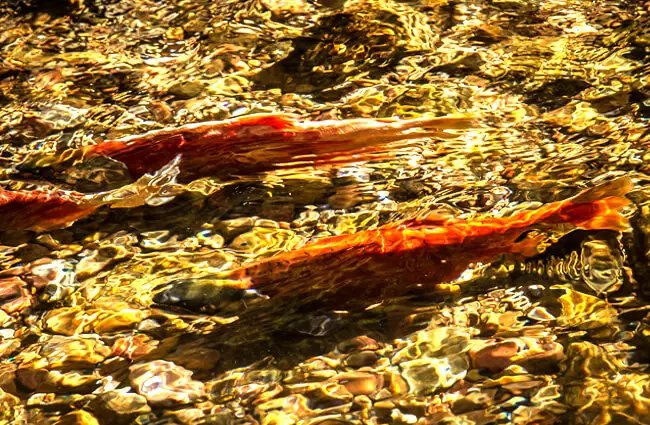

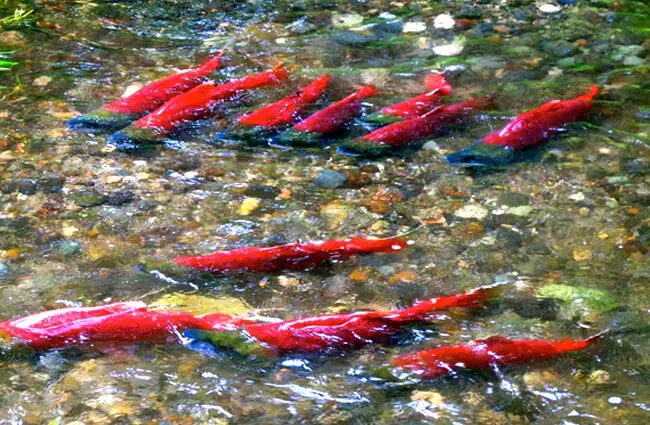
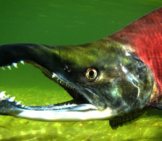
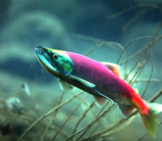
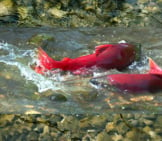
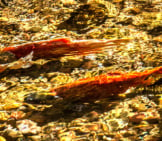


![Red Angus Closeup of a beautiful Red Angus cowPhoto by: U.S. Department of Agriculture [pubic domain]https://creativecommons.org/licenses/by/2.0/](https://animals.net/wp-content/uploads/2020/03/Red-Angus-4-238x178.jpg)


![Red Angus Closeup of a beautiful Red Angus cowPhoto by: U.S. Department of Agriculture [pubic domain]https://creativecommons.org/licenses/by/2.0/](https://animals.net/wp-content/uploads/2020/03/Red-Angus-4-100x75.jpg)

